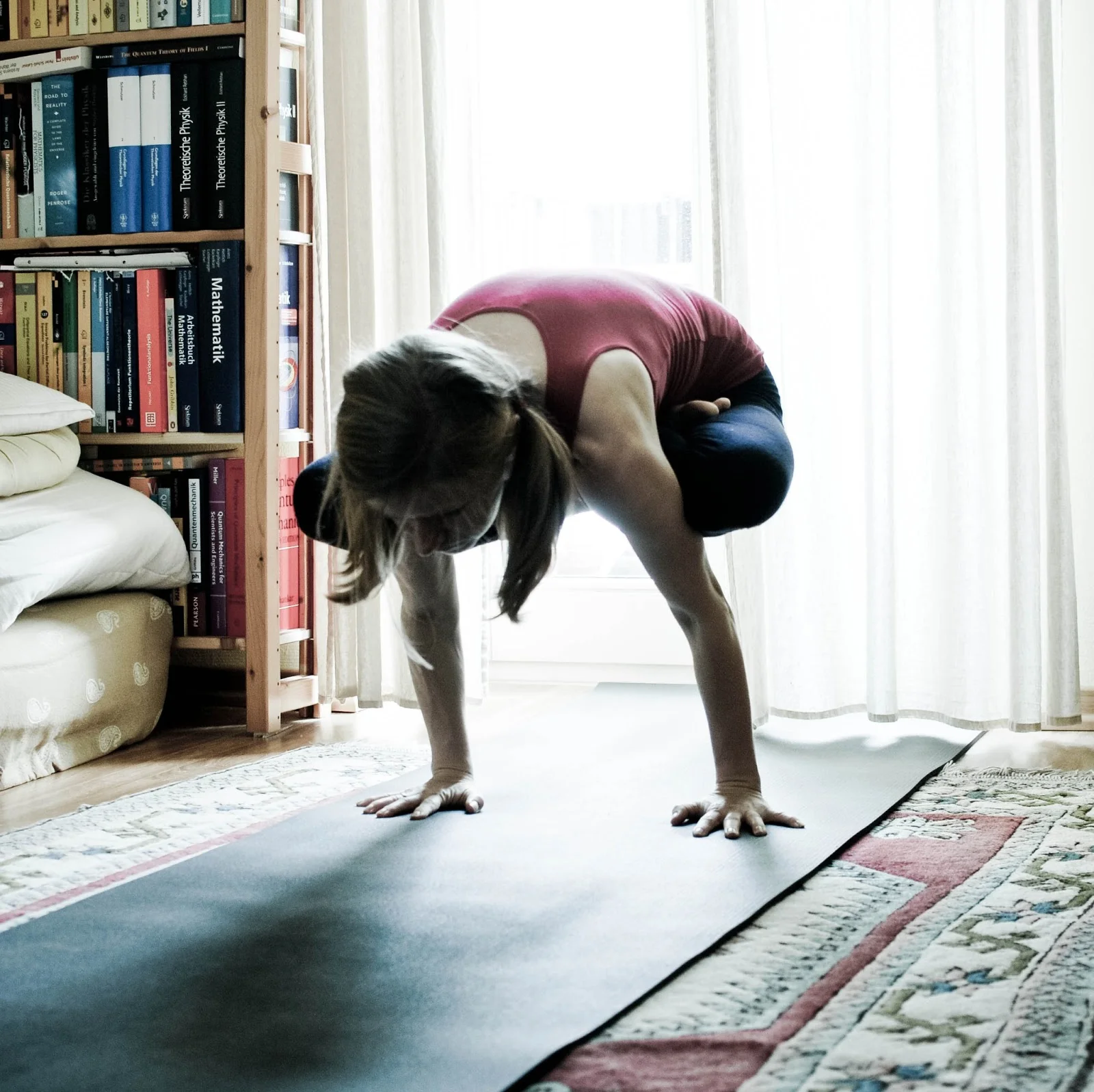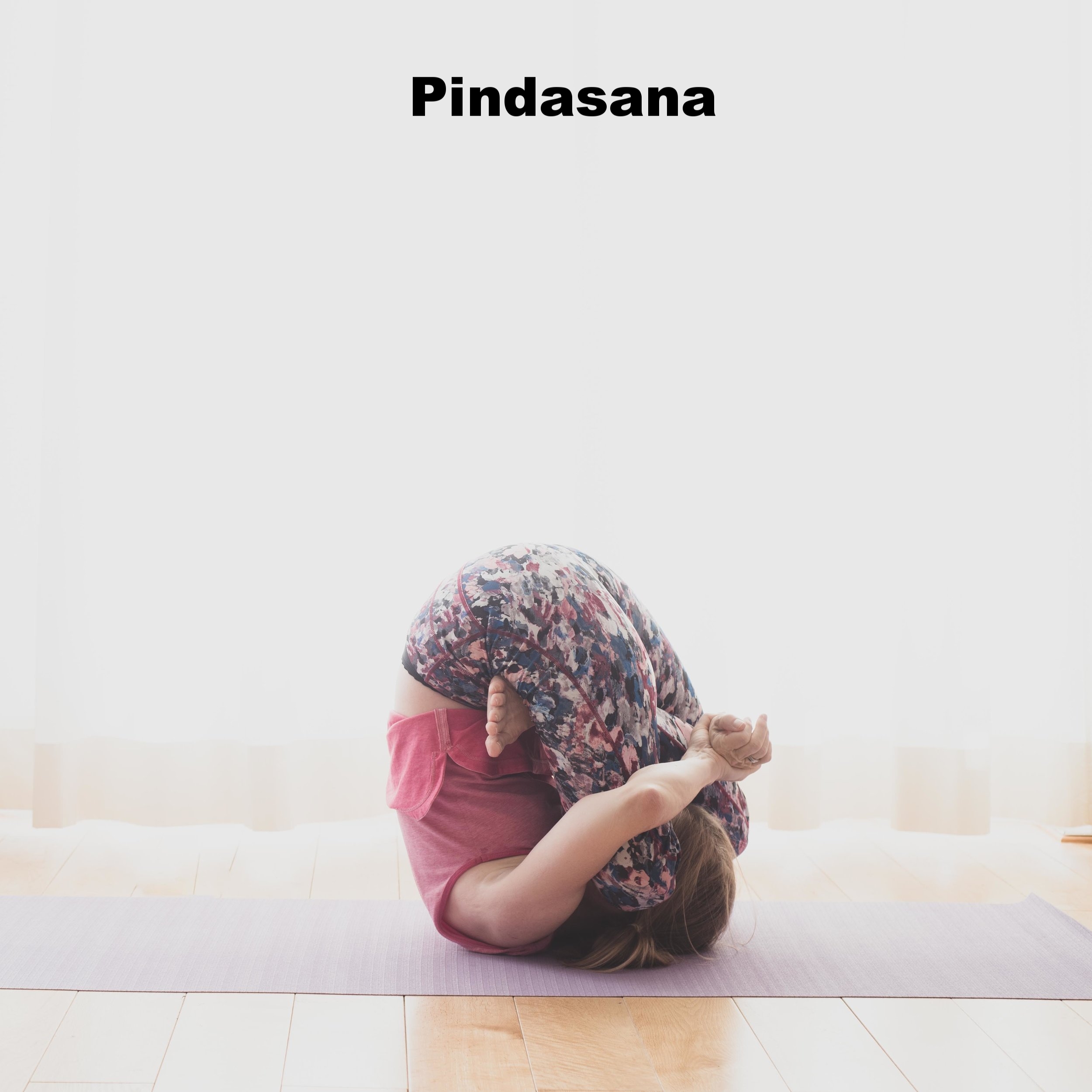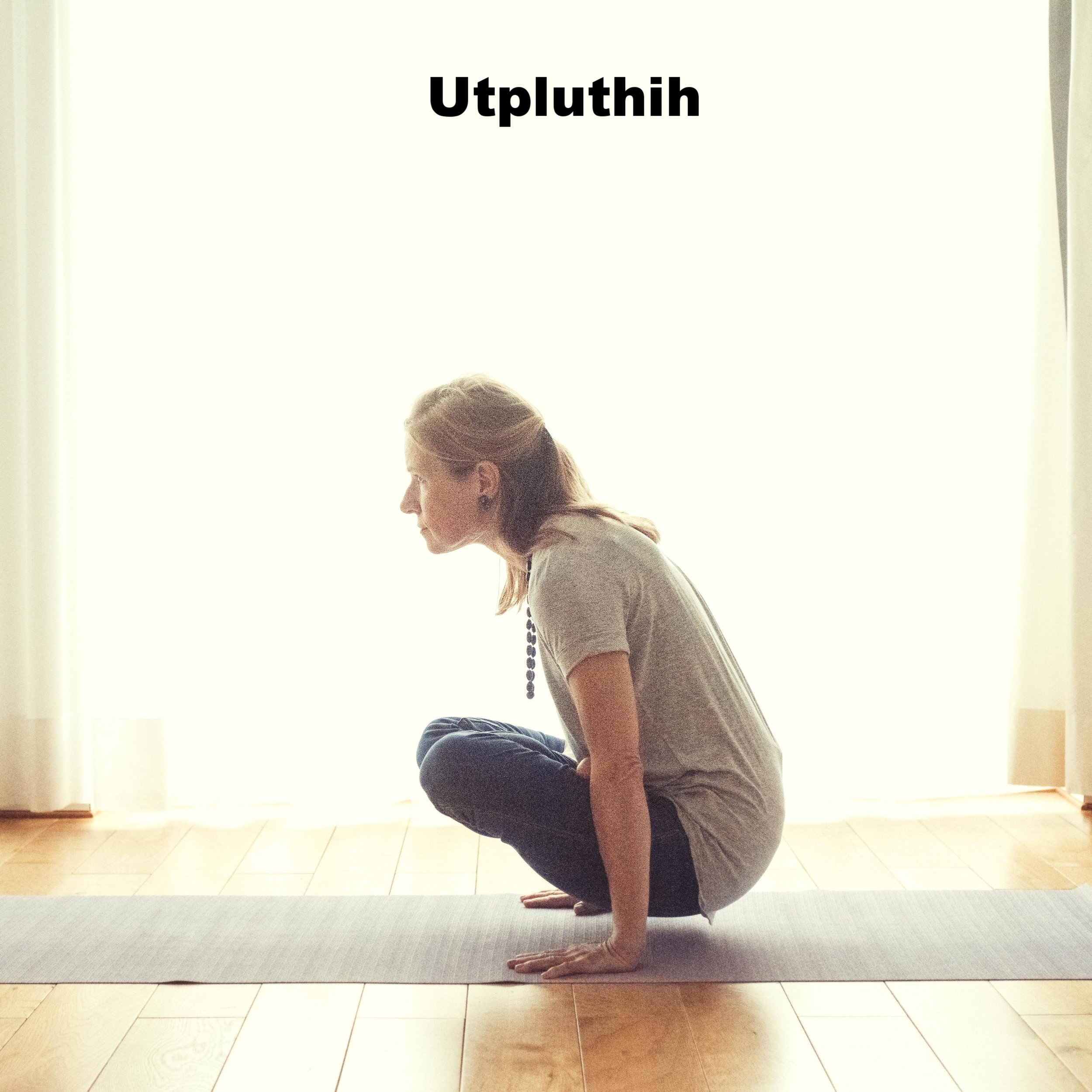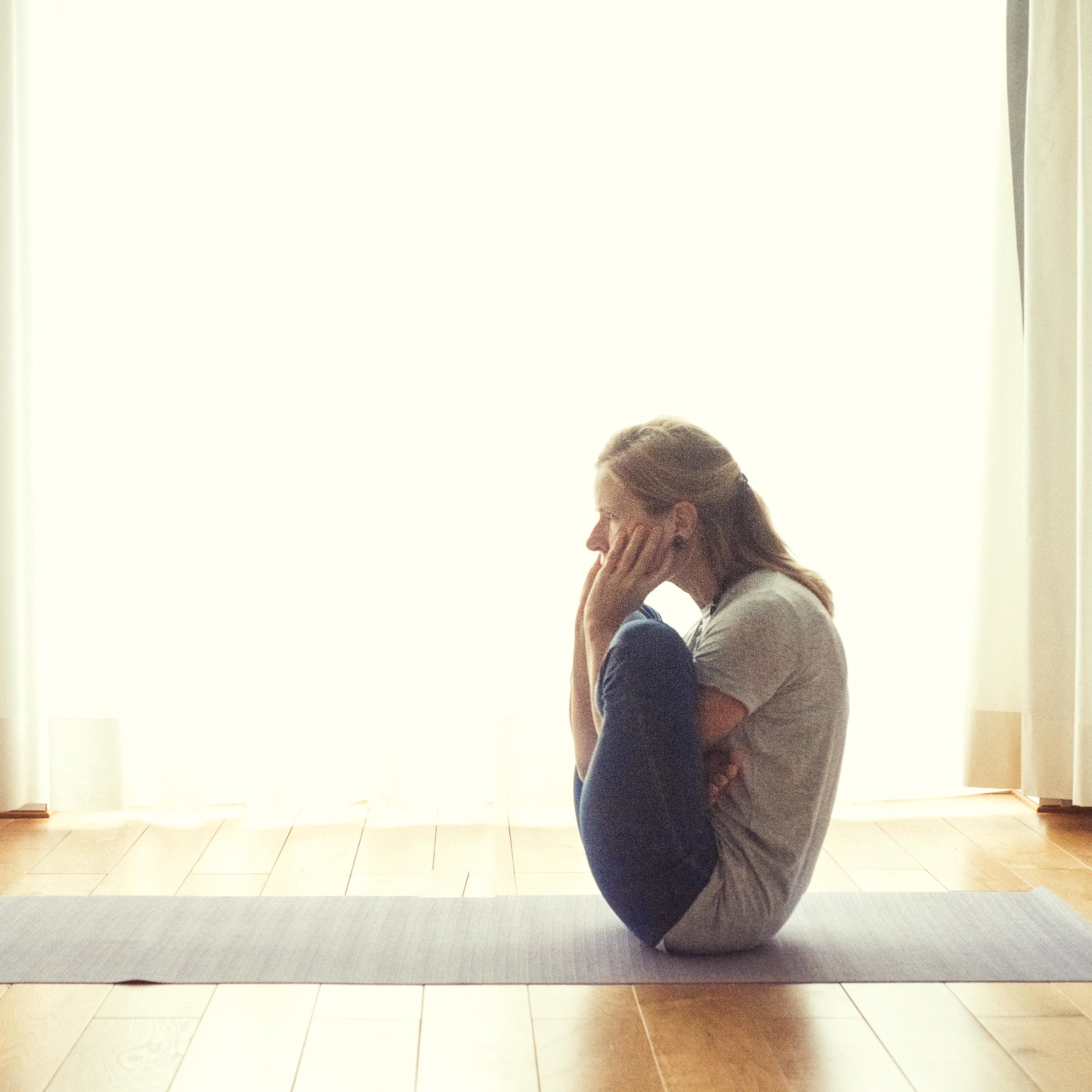Padmasana and the Ashtanga yoga series
Each of the four Ashtanga yoga series has in the middle part an asana sequence with padmasana.
Series: Garbha pindasana and kukkutasana
Series: Supta vajrasana (a static part and a dynamic part)
Series: Kukkutasana A, B and C (three different vinyasas)
Series: Punga Kukkutasana (very demanding)
My light bulb moment yesterday:
In the first series we have padmasana combined with forward bending.
In the second series we have padmasana combined with back banding.
In the third series we have padmasana combined with arm balancing.
In the forth series we have padmasana combined with arm balancing and twisting.
The combination padmasana with inversion is covered in the closing sequence. This is perfect!
With this analyses it’s possible to find similar variations that might be a bit easier at first than the given asana. One can approach any asana slowly, step by step.
Many yoginis struggle with garbha pindasana. When a yogini is able to sit comfortably in lotus pose the pose is almost mastered. The rest is technique. I’ll write about this later.
The asana of the second series requires usually help from another person. I had a teacher who allowed other yoginis to adjust. Another teacher didn’t like this at all. Not many fellow yoginis could adjust in a way that the adjustment was a support. At home one has no teacher at all. So what to do. I used to sit in padmasana, arms crossed behind the back. I held my toes and took 5 deep breaths. That was it. With my new analysis I’d do an asana with padmasana combined with back bending. There are a lot of variations.
Urdhva kukkutasana is an arm balance asana. The differences between A, B and C refer to the vinyasas. The not dynamic part is always the same. In order to move into this asana I did headstand with the hands flat on the floor. Then I crossed the legs into padmasana and lowered them. When they touched the arms I lifted the body, I stretched my arms. I lost so much strength that I’m not able to lift my body these days. That’s why I show above a picture from 2013.
I never practiced punga kukkutasana. Once I tried it, but I’m miles away from this twist. Easier variation can be integrated in the first series, so that the body gets prepared for the future.
In one of my next pose I’ll show variations of asanas with padmasana……..there are a lot variations.
I’m ready now for primary.
Padmasana and variations
Bit by bit I go through the asanas of the Ashtanga yoga series. I show connections that I found out. Having an overview can be motivating.
Lotus pose gets introduced in the standing sequence of Ashtanga yoga. Ardha baddha padmottanasana is an asana with half lotus. In the middle part of primary come three asana that require the skill of padmasana. It’s garbha pindasana (2 parts) and kukkutasana. All these asanas are challnging. Other variations of padmasana come in the closing sequence. There are 6 asanas with legs folded into padmasana. Also the other 3 series of Ashtanga yoga have one asana minimum with lotus pose in their middle part. With each series it gets more demanding.
Each time when practicing one of the Ashtanga yoga series one practices at least seven asanas with legs folded in padmasana. In addition padmasana in it’s simple form is the best seat for pranayama and meditation.
I think this can be enough motivation to spend some time in learning this classic pose. It’s possible to integrate padmasana in the daily life. Right now for instance I sit here in lotus pose (left leg first…. hahaha). Each time when sitting anywhere one can exercise this pose and prolong how long one sits in that pose. Any knee discomfort is a message from the body to get out of the pose.
When padmasana is mastered a key asanas is mastered. Many asanas to come build on that skill.
Of course there are much more asanas with padmasana that are no part of the Ashtanga yoga series. I’ll show some in blog posts to come.
At the end of this post I want to tell a story. I reflected for a long time if I shall write about it, because it’s not my story. Someone, who experienced it told it. It shall be a warning. Injuries are a taboo in the community, but I think one shall talk about it, too.
A yogi went to a workshop. One of the VIP masters offered a workshop in Berlin. Like everything workshops have advantages and disadvantages for all parties, the teacher and the students alike. The teacher want to earn money. For those who are not on the top it can mean to offer more than a led class of 90 minutes to cover the trip at least. Best is to fill three days with lots of contents. Meditation is such a contents. To be honest if I practiced 10 minutes of meditation every day I’d be glad. In that workshop the students were meditating one hour. This ambitious yogi tried to sit in lotus pose for this hour. I know in workshops we don’t feel discomfort, the atmosphere blows it away. We are all a little bit more motivated to hold poses and to move our limits. The knees of this yogi started hurting after this workshop. He thought that he was too long in lotus pose. The pain didn’t go away, so he went to doctors. Since then I saw him in yoga classes with a mull around his one knee. Usually injuries mean a setback. Much less is possible with an injured body part. Yet the pain didn’t disappear and the doctors recommended a surgery. I know that too many surgeries are done in hospitals as they bring the most money. Sometimes patience is necessary. My back issues lasted 2 years. We want everything quick, quick, I know. After the surgery of the knee everything went worse. I don’t know why, but in hospitals are so many resistant germs, perhaps some of those entered the body of the yogi. One day I read on Facebook that he has pain all day long. This might be an extreme story. But me too, I never thought that I’d injure myself seriously and that it would last that long. The shock still sits in my bones. I thought that I had to give up yoga. I’m glad I didn’t. I always heard the sentence of this orthopedist in my head: Don’t give it up. Somehow I kept my yoga practice alive, despite the pain.
Instead of spending time on my mat practicing yoga, I had to go to doctors and orthopedists, physical therapists. I even did rolfing. I read books, watched videos, found new doctors. Not every injury can be avoided. But one can try to practice safely.
Be patient with your body. Nothing can be forced. It can take very long to master an asana. One can celebrate tiniest successes. On the Internet are many advanced yoginis. Asanas look very easy when performed by an advanced yogini. The majority of students struggles with basic asanas. It’s OK. To learn asanas is a process. It can last very long, even decades till an asana is mastered. I wish that your yoga journey is a safe one. Take care.
Garbha pindasana and Kukkutasana
Half lotus got introduced in the standing asanas with the pose ardha baddha padmottanasana. It shall prepare full lotus pose. The asanas are entangled with each other. In the middle part of the first Ashtanga yoga series comes an asana that requires that one is able to do full lotus pose. Not enough, one must somehow stretch the arms through the folded legs. Then comes a dynamic part, the rolling clockwise. Finally the pose ends in kukkutasana.
Garbha pindasana is one of the four core asanas of primary. The reason: Most yoginis struggle with this asana, that has three parts. The four core asanas of primary are the four most difficult asanas for most students who struggle their way through this first series.
I love the Ashtanga yoga series. I also know that in order to practice intelligently one must practice sometimes other asanas than given. It might make sense to practice first easier asanas in order to master the more difficult ones faster and without injuries. First one must be familiar with lotus pose before one is able to do garbha pindasana. My opinion is that it’s not necessary to stop here if one is not able to perform this asana perfectly. It will come with time.
More asanas that integrate lotus pose come in the closing sequence. Only the last three asanas are rather classic.
Lotus pose is a basic asana, it’s worth learning it. It’s THE pose for pranayama and meditation. Also in the second series comes an asana with lotus pose (supta vajrasana), so in the third series (urdhva kukkutasana A, B and C) and also in the forth series (punga kukkutasana) .
I learned padmasana in front of the TV. I sat in that position. When it start hurting, I changed legs. One must take care of the knees. Too much ambition is not recommended. A daily dose of padmasana can do miracles.
I change legs. During 2 years I followed the rule ‘right leg first’. After these 2 years my body was imbalanced. At home I can practice what I consider good for me. On Mondays, Wednesdays and Fridays I take the right leg first. On Tuesdays, Thursdays and Sundays I take the left leg first. I always want to exercise the right side and the left side of my body evenly. As a right-hander my right side is stronger, my left side is more flexible, not much but it’s remarkable.
Beside the asanas with lotus pose that are exercised in Ashtanga yoga, there are much more asanas with lotus pose that are worth trying. I’ll surely take pictures…….enough for today.












